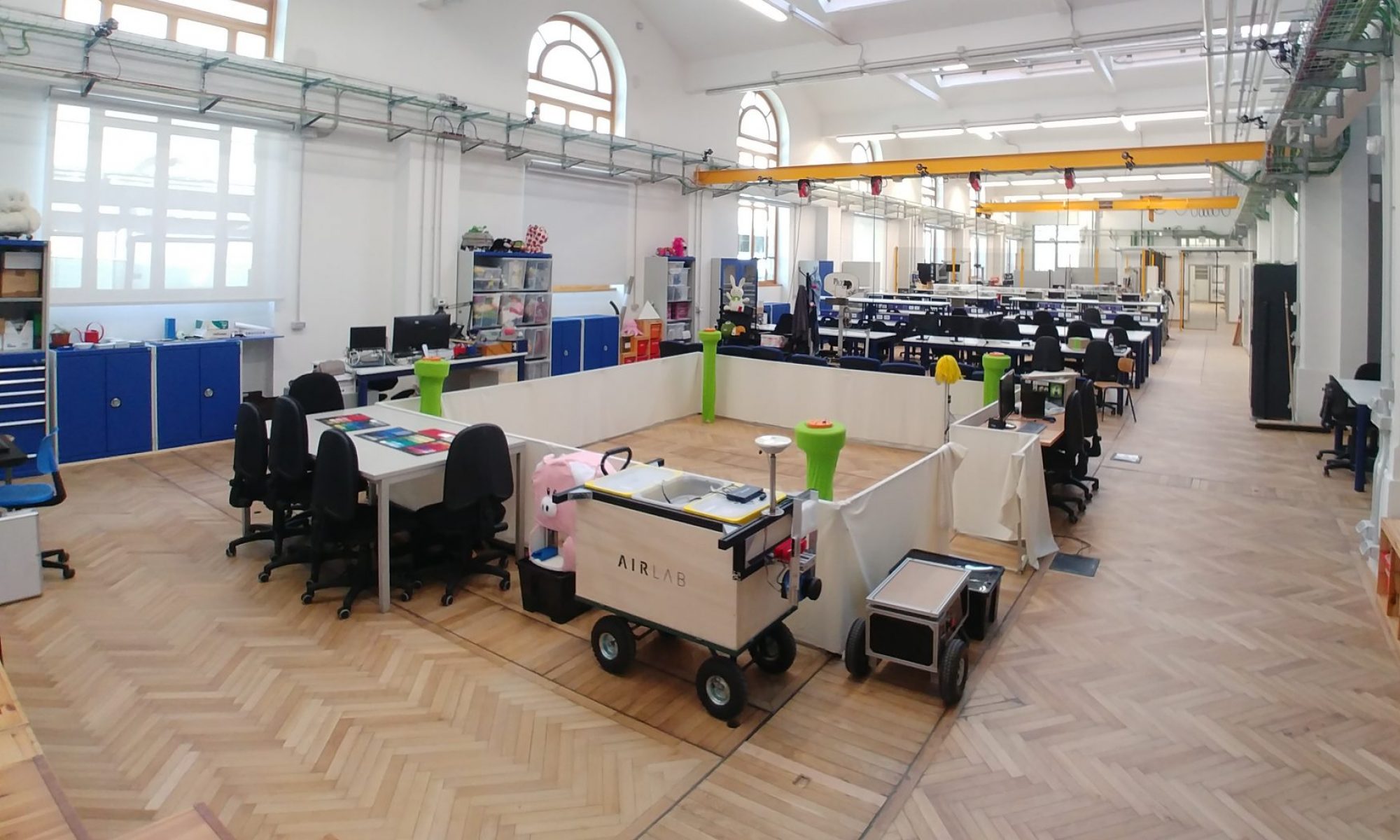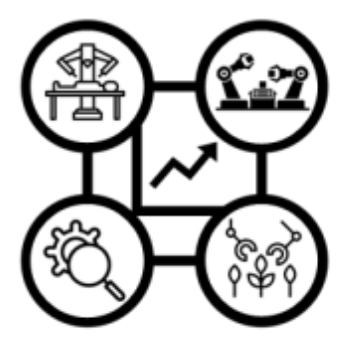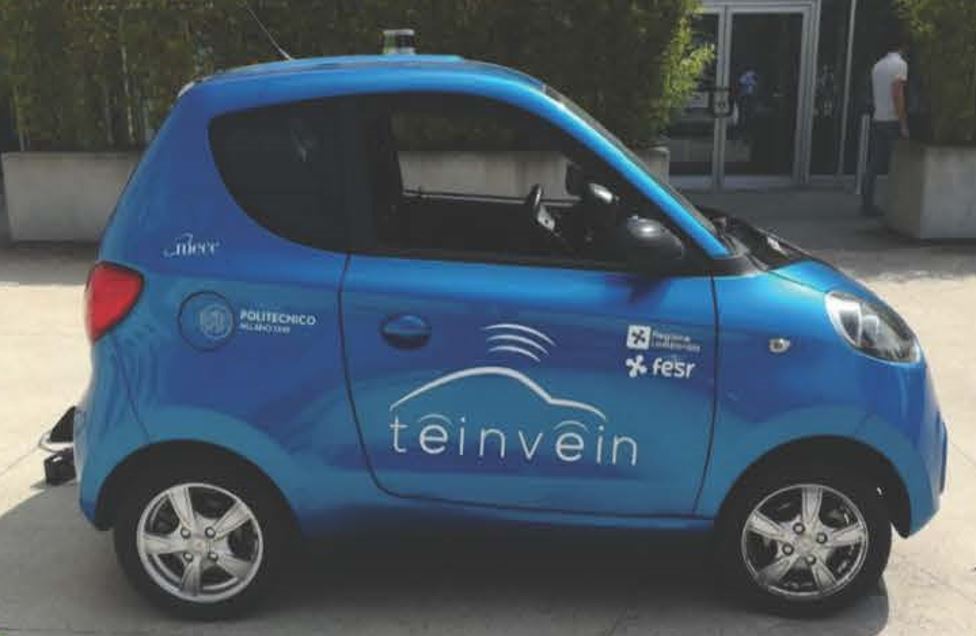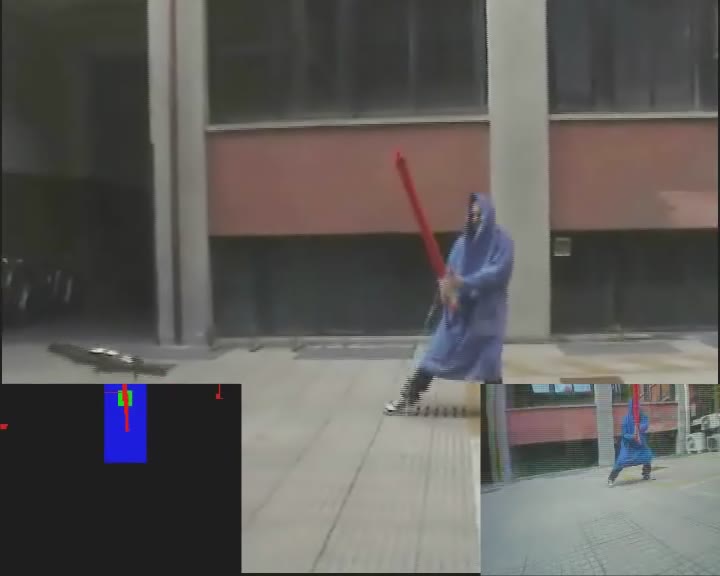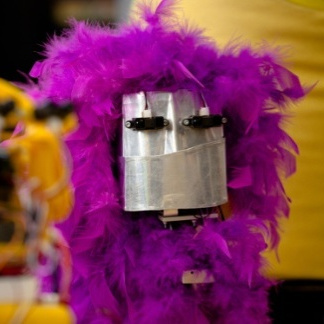Personal page: https://www.deib.polimi.it/ita/personale/dettagli/910274
METRICS

METRICS (Metrological Evaluation and Testing of Robots in International CompetitionS) organises challenge-led and industry-relevant competitions in the four Priority Areas (PAs) identified by ICT-09-2019-2020: Healthcare, Infrastructure Inspection and Maintenance (I&M), Agri-Food, and Agile Production.
Within METRICS, AIRLab is in charge of the ACRE (Agri-food Competition for Robot Evaluation) competition, dedicated to benchmarking agricultural robots.
TEINVEIN
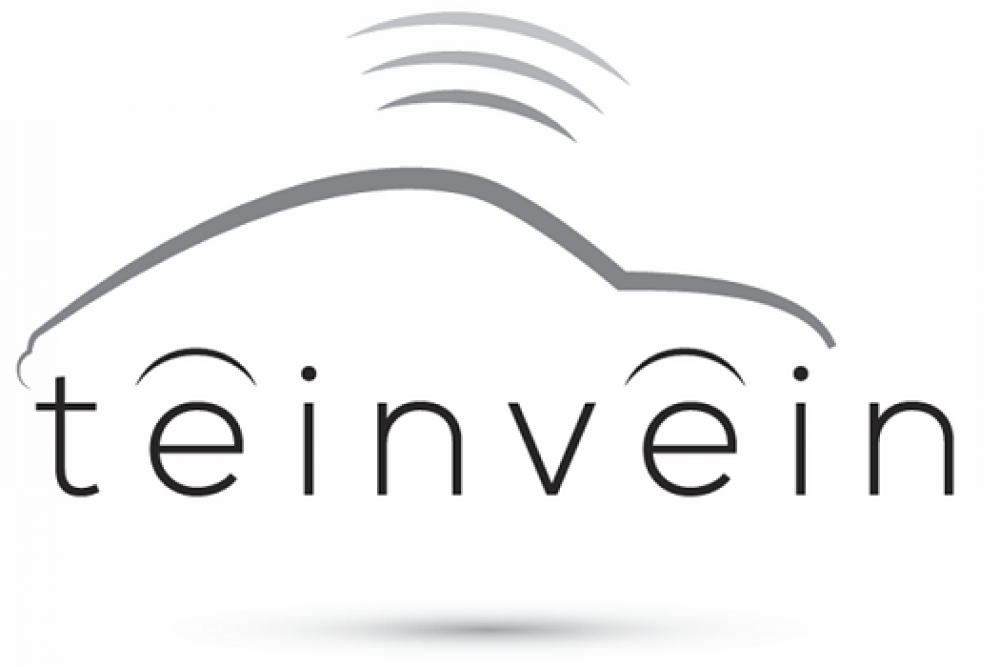
TEINVEIN (TEcnologie INnovative per VEicoli INtelligenti) is a project financed by Regione Lombardia for the construction of a platform for intelligent autonomous vehicles.
Contact: Matteo Matteucci
For additional details: https://www.deib.polimi.it/eng/news/details/683
ALMA
ALMA (Ageing Without Losing Mobility and Autonomy) is a European project focused on supporting the autonomous mobility, navigation, and orientation of the mobility-impaired person (elderly and/or temporarily or permanently disabled person).
The ALMA system is a modular combination of advanced hardware and software technologies into an integrated and modular cost-effective system. AIRLab contributed to ALMA with its Personal Mobility Kit.
Contact: Matteo Matteucci
For additional details: http://www.alma-aal.org/
Jedi Trainer
In Jedi Trainer a drone is flying around a Jedi knight trainee aiming at training its ability in using the light saber, as in the first episode of the Star wars saga with Luke Skywalker.
By analyzing the image from the onboard camera, the drone maintains the distance from the player, keeping it always in the image, and moving slightly left and right as to look for the best position to shot. When appropriate, it makes a sound with its propeller, simulating a laser shot, and the player has to parry it by putting the light saber in front of her/his chest.
The drone is intrinsically adapting to the style of movement of the player: a more active player will have to face a more active trainer.
Robotower
Robotower is a game where an omnidirectional robot and a human player confront in a playground 4×4 m, having four towers on the corners. Aim of the robot is to knock down the towers. Aim of the human player is to defend the towers for at least 3′ by intercepting the robot’s path. The human player can also push a button on the tower, this will lit a LED every 2.5″; when all four LEDs are lit, the human player has conquered the tower, and the robot cannot aim at it any longer. Of course, while the player pushes a button the robot may aim at another tower.
The system can estimate the the player’s skill on line and modify the capabilities of the robot to obtain an even game, in accordance to the theory of flow. There is also the possibility to trigger deceptive actions, which reinforce even more the sensation to play against a rational agent.
Presentation of the game.
Robogames
Robots playing with people in physically interactive games exploit both the abilities requited to autonomous robots (such as: mapping, perception, navigation, planning, …), but also those required to appear as effective players and good play companions, involving the players in challenging and satisfactory games, matching their ability.
We have developed many games gradually exploring different facets of the development of games hwere a player is an autonomous robot, from the perception and actuation abilities needed to play following the game rules, while guaranteeing the safety of the players, to timing in different aspects, to the characteristics of the robot (e.g., shape, speed, materials, sensors…), to involvement and adaptation to the skill of the player, either intrinsic or learned while playing.
A selection of the developed games is listed here below.
Robot and disability
Robots can be successfully applied with success with people with disabilities. Since years we are developing robots, also in collaboration wit care centers, which could be used for inclusive play . A web site dedicated to this activity is http://playbot4all.polimi.it.
Samples of these robots are also listed here below.
Concierge
Concierge is a robotic head intended to stay on the side of an office door and following with the “eyes” the persons passing in the corridor. When a person comes to the door Concierge makes a “Yes” or “No” gesture according to the possibility to disturb the person in the office. Concierge can be dressed in different ways, corresponding to different psychological types, expressing the same behavior in different flavors. The more appreciated is the funky one.
Contact person: Andrea Bonarini
Benchmarks for Autonomous Robots
Benchmarking means objectively measuring the performance of a robot when executing a task. Being able to benchmark robot systems is necessary to compare their performance, and thus to better understand their strenghts and weaknesses. Both research and industry need this to progress.
However, when dealing with autonomous agents benchmarking is tricky. How to devise testing procedures that yield objective results? What metrics capture the key points of the robot performance? How can robots that perform the same complex action differently be compared?
AIRLab has been working on these issues for a long time, accumulating experience in both methodology and real-world benchmark design, setup and execution.
Over the years, we participated -and are participating- to many European projects about robot benchmarking, including RAWSEEDS (FP6), RoCKIn (FP7), RockEU2 (H2020), RobMoSys (H2020), EUROBENCH (H2020), SciRoc (H2020), METRICS (H2020).
Contact: Matteo Matteucci
